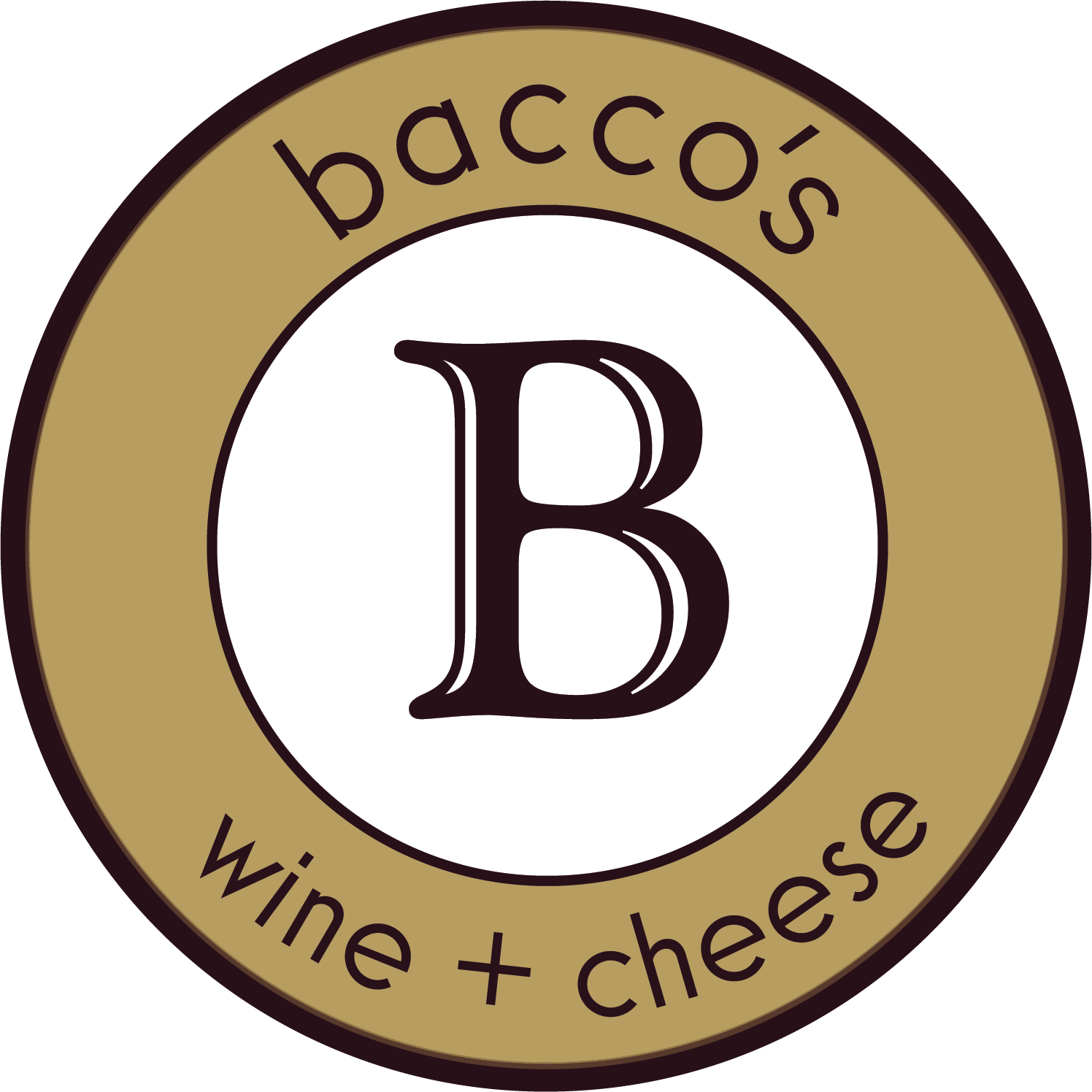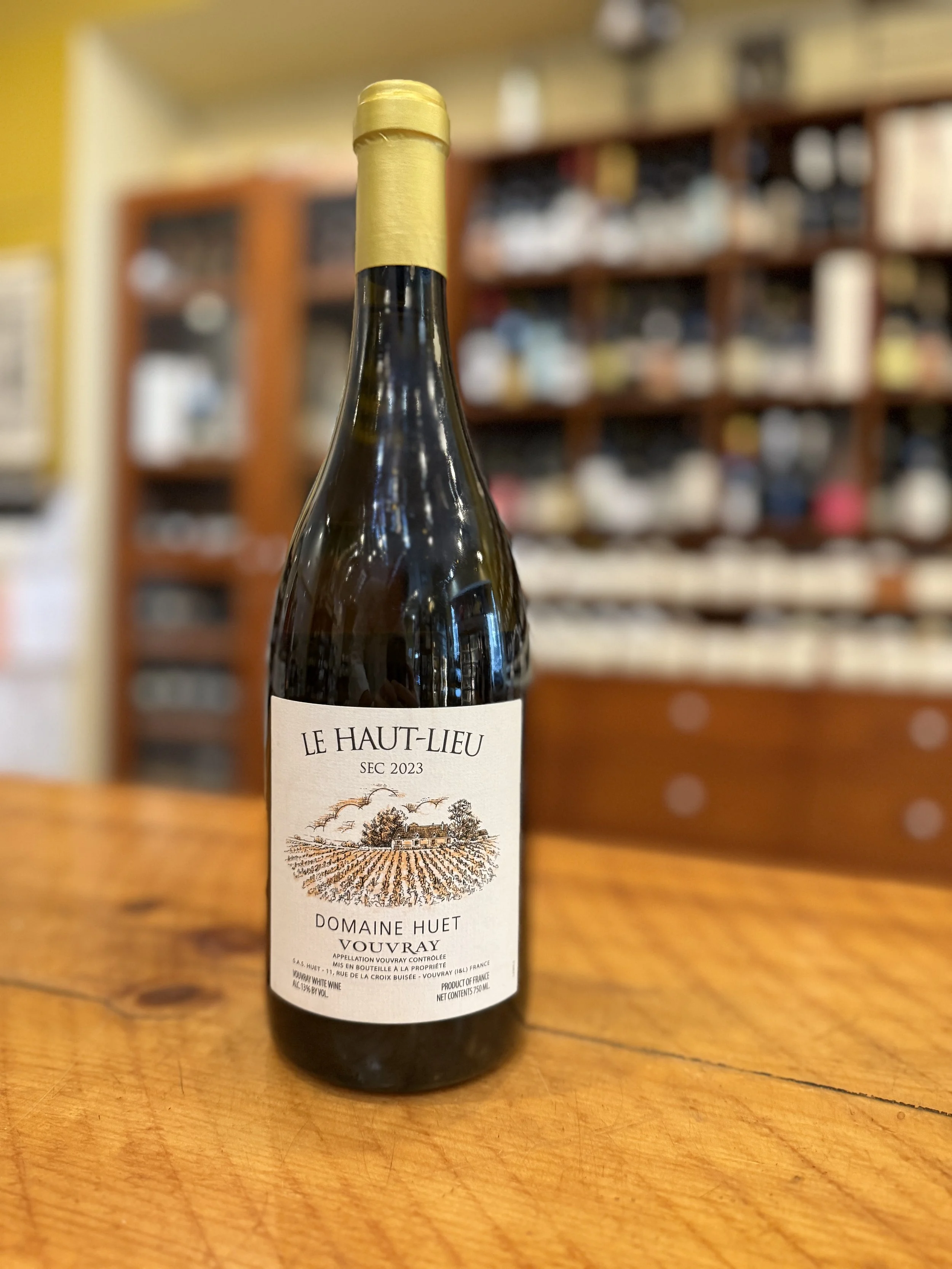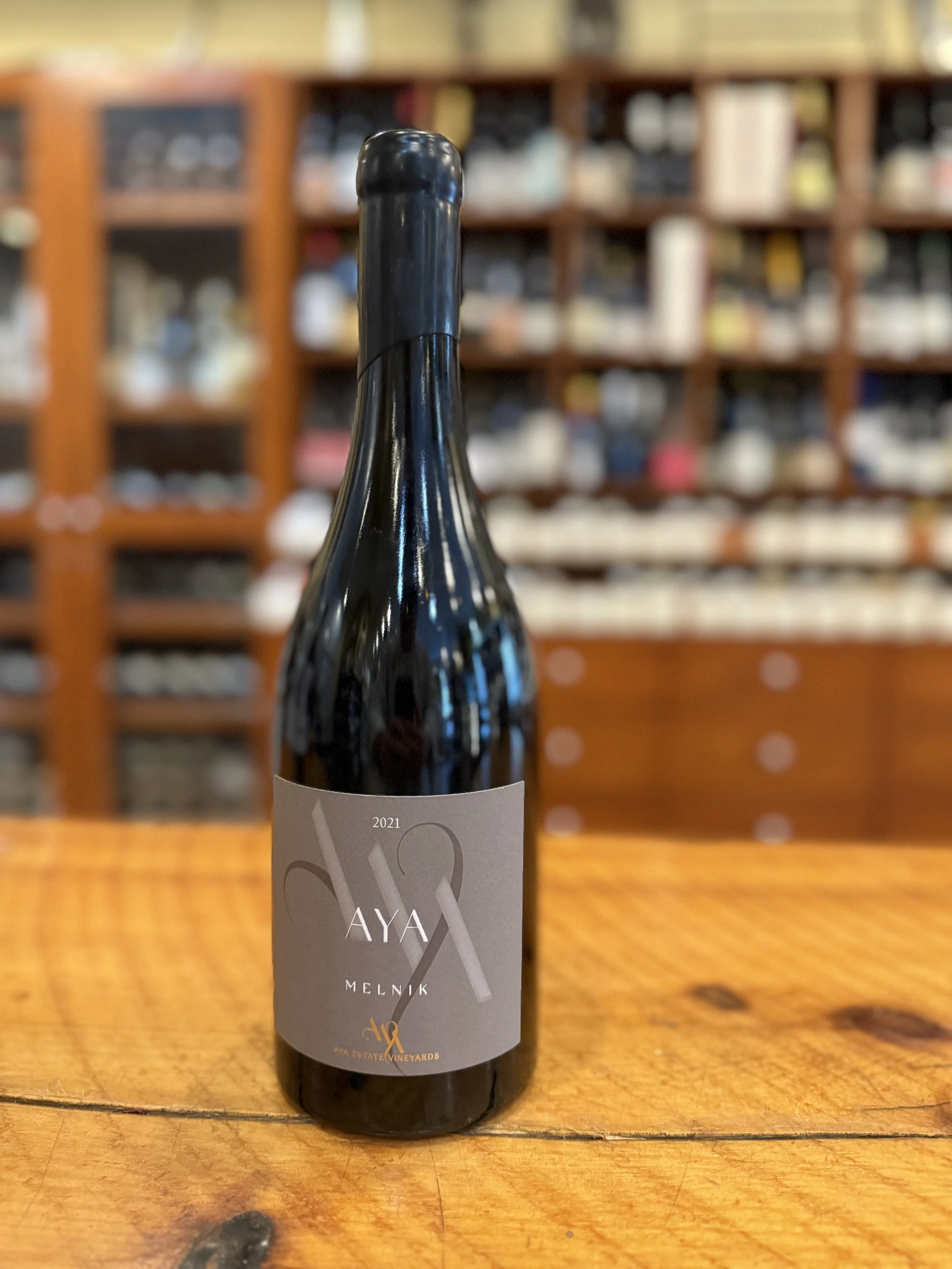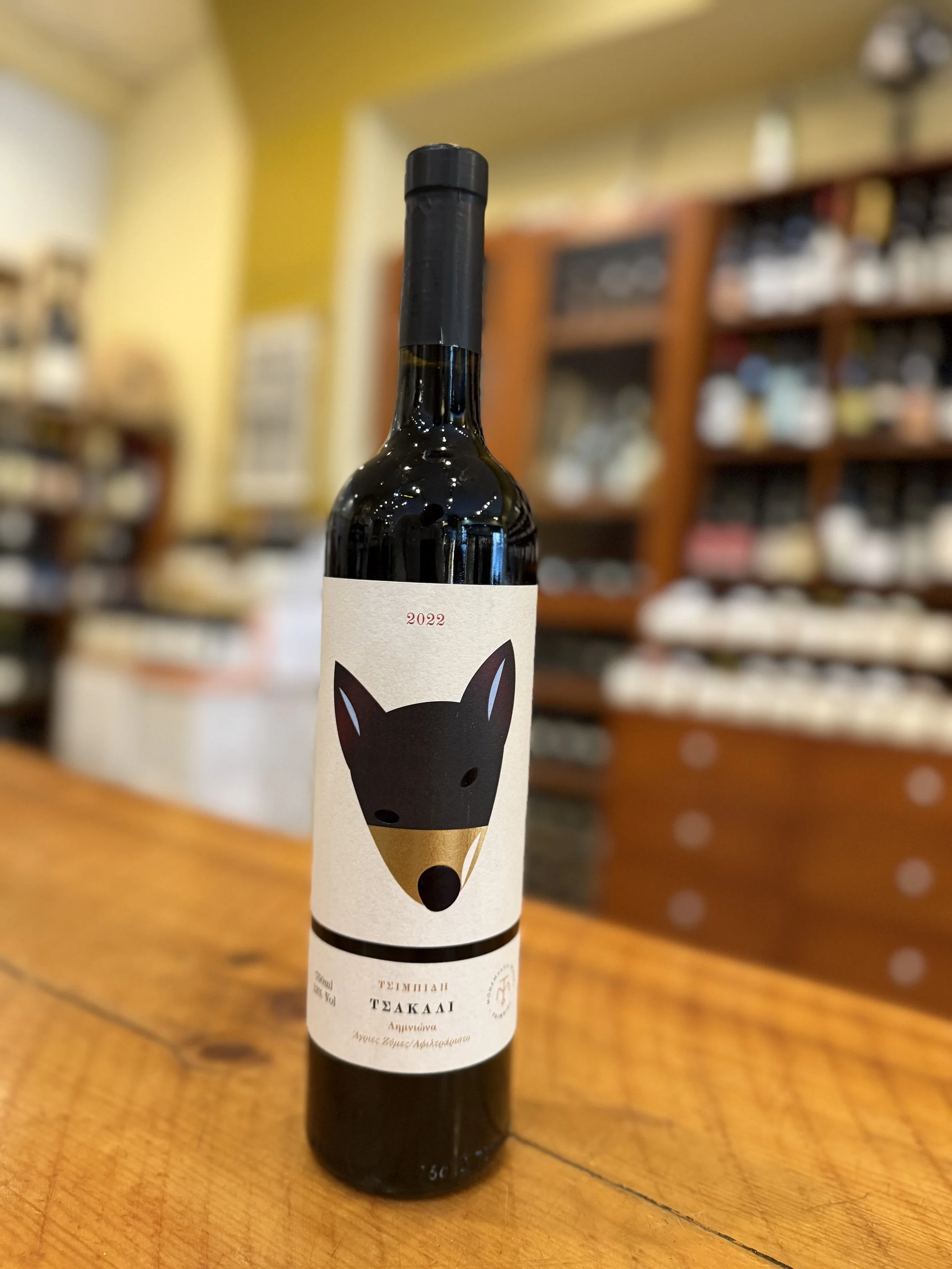
February 2025
Some Parts Unknown
Bacco’s Wine Club
February 2025
This month, a celebration of one of the Loire Valley’s most incredible producers and take a journey to some wine regions beyond the ordinary.
Chenin Blanc, Limniona, and Melnik don’t quite roll off the tongue linguistically, but they’ll certainly please the palate.
Domaine Huet
'Le Haut Lieu' Sec
Vouvray
Vouvray
Loire Valley
France
Farming: Sustainable, Practicing Organic
The Loire Valley is home to some of France’s most well-known and overlooked wines, thanks to the incredible breadth of territory it occupies and the number of wines produced in this otherwise cooler climate region of northern France.
The signature wine here, at least stateside, is Sancerre, named for the town and surrounding region that produces a Sauvignon Blanc that is highly prized for its freshness and bold character, often to the point that people don’t associate Sancerre with Sauvignon Blanc, even though they are the same.
Vouvray, though perhaps not quite as well known, faces a similar challenge. Here, the grape is Chenin Blanc, grown in far more places throughout the Loire Valley than the more austere Sauvignon Blanc, but Vouvray is unique in the sense that it produces Chenin Blanc at different levels of sweetness: Sec, Tendre, Demi-Sec, and Moelleux - but just like Germany’s noble Riesling, there’s a perception that all Chenin Blancs are sweet, even though the majority are not.
About Domaine Huet
Since its founding in 1928, Domaine Huët has been the benchmark for age-worthy Chenin Blanc in Vouvray, producing a remarkable range of wines, from sparkling and dry to semi-dry and luscious Moelleux styles. The estate was established by Victor Huët, a Parisian bistro owner who sought refuge in the Loire Valley after WWI. His son, Gaston Huët, took over in 1937, leading the domaine to prominence despite enduring five years as a German POW during WWII. Gaston’s dedication to quality and showmanship cemented Huët’s reputation, particularly through the acquisition of three key vineyards on Vouvray’s prestigious Première Côte: Le Haut-Lieu, Le Mont, and Clos du Bourg.
Gaston’s legacy was carried forward by his son-in-law, Noël Pinguet, who joined in 1971 and helped craft legendary wines that reflected each vintage’s unique character. By 1979, Jean-Bernard Berthomé became an integral part of the winemaking team, ensuring continuity and expertise. A turning point came in 2002 when Anthony Hwang, a passionate wine collector, became a financial partner, securing the domaine’s future. Today, under the leadership of Benjamin Joliveau, with continued support from Sarah and Hugo Hwang, Domaine Huët remains at the pinnacle of Vouvray production, consistently delivering wines of purity, balance, and transparency.
A pioneer in biodynamic viticulture since 1993, the estate continues to uphold its commitment to expressing the region’s finest terroirs. Each vintage, Huët crafts Sec, Demi-Sec, Moelleux, and Moelleux 1ère Trie wines from its three historic vineyards, along with a refined Pétillant sparkling wine. Le Haut-Lieu, the original vineyard, produces wines known for their accessibility, thanks to its rich limestone-clay soils. With nearly a century of excellence, Domaine Huët remains a defining name in Loire Valley winemaking.
About Le Haut-Lieu
The original Huët vineyard is nearly 9 hectares. It has the richest soils of the domaine’s three crus—a deep limestone-clay—and the wines are generally the estate’s most approachable. In some vintages, small quantities from nearby estate parcels may be added to Le Haut-Lieu.
Notes on the Vintage
Delicate and linear on the palate, this is a pure, fresh, dry, and finely textured, refined Chenin Blanc with persistent purity, finesse, and salty-mineral tension. It’s a treat already, even though it’s just a baby
AYA Vineyard Estates
2021 Melnik
Struma River Valley
Harsovo
Bulgaria
F arming: Organic/Sustainable
Nestled in the heart of Bulgaria’s renowned Struma River Valley, AYA’s vineyards stretch across sun-drenched slopes at 250 to 330 meters above sea level, near the village of Harsovo. This historic wine region, with a winemaking tradition dating back to 3500 BC, is shaped by a unique interplay of Mediterranean and mountain influences. Warm Aegean breezes sweep through the vineyards by day, while cool mountain air descends at night, creating dramatic temperature shifts that enhance grape development. The soil—a distinctive yellow-hued mix of sand and limestone—adds to the terroir’s complexity, giving the wines their signature character.
AYA is deeply committed to sustainable viticulture. The estate’s vineyards are certified organic and follow biodynamic principles, ensuring a holistic approach to farming. Between the rows of vines, nutrient-rich legumes and diverse grass mixes are planted to enhance the soil naturally, promote biodiversity, and prevent erosion.
At the heart of AYA’s winemaking is the iconic Melnik grape, Bulgaria’s most famous indigenous variety. Late-ripening and thick-skinned, Melnik thrives in this terroir, producing wines of remarkable depth and structure. AYA’s Melnik vines, some over 50 years old, yield wines that are both a tribute to the region’s storied past and a testament to its bright future.
Notes on the Wine:
Crafted with precision and respect for tradition, AYA Melnik is a true expression of its terroir. The grapes are handpicked and meticulously hand-sorted at the end of October, ensuring only the finest fruit makes it into the cellar. Fermentation occurs spontaneously in stainless steel tanks, allowing native yeasts to guide the process and preserve the grape’s authentic character.
The wine then spends 12 months aging in 500L used French oak barrels, gaining depth and subtle complexity while maintaining its vibrant fruit profile. AYA’s commitment to purity is evident—unfined and unfiltered, the wine retains its natural texture and integrity. With only minimal sulfur added (total 67 mg/L) and a balanced 12.85% ABV, AYA Melnik is a true reflection of both the vineyard and the hands that craft it.
Monemvasia Winery
Jackal
Limniona
Laconia
Peloponnese
Greece.
Farming: Practicing Organic
Inspired by the legend of the lost Malvasia wine and driven by love for their land and faith in its potential, they made the big decision to start a winery from scratch.
Their passion and dedication to the revival of medieval Malvasia led them to search for indigenous varieties and their traditional winemaking methods. During this journey, they discovered and experimented with old, rare varieties of the region, and thus Monemvasia, Kydonitsa, Asproudi and Mavroudi emerged.
A Note on Limniona
Limniona is quickly emerging as one of Greece’s most exciting indigenous red grape varieties, poised to shape the future of the country’s fine wines. Once on the brink of obscurity, its remarkable potential was rediscovered through years of dedicated research and microvinifications, bringing together scientists, growers, and winemakers. Today, it is cultivated across Greece, with its roots traced back to Thessaly, particularly the regions of Karditsa and Tyrnavos.
Limniona wines captivate with their deep, vivid purple-red hue and a nose that bursts with red fruit, wild herbs, earthy minerality, and subtle spice. On the palate, it strikes a rare balance—structured yet refined, with firm but elegant tannins, bright acidity, and moderate alcohol,. This harmonious profile makes Limniona a standout among modern Greek reds, offering both immediacy and aging potential
A Note on The Jackal
Though Monemvasia got its start bringing more attention to the native ancient varietals of the Southern Peloponnese, Limniona became a natural fit here, thanks to the heat, wind, and cooling nights that are common for this coastal region. It is a vibrant red wine that we keep wanting to come back to again and again, and we think you will too.



